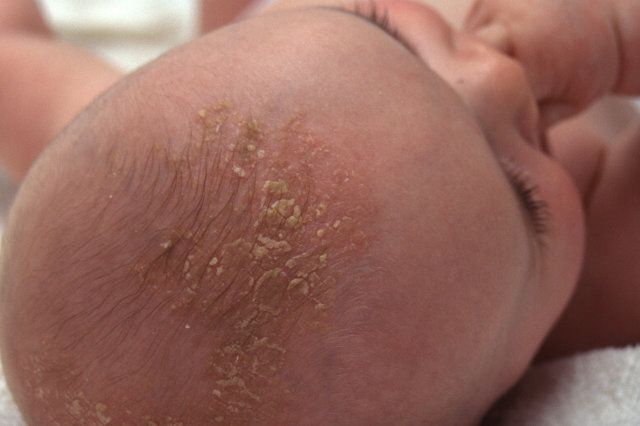
One of the most common skin conditions among young babies is cradle cap, which is a sweet sounding name for something that can be so unsightly! Don't worry, it's harmless and it won't last.
What is it?
Cradle cap is the yellow crusting/scaling of a baby's scalp and is thought to be caused by overactive sebaceous glands – it has nothing to do with lack of cleanliness. Your baby might have just a small patch on the top of their head, or it might cover a larger area, even showing up on the eyebrows and above the ears.
It is likely to occur in the first few weeks after birth, and will probably last for a few weeks or months (although some children can have it into toddlerhood). While it might not be very pretty, cradle cap is highly unlikely to be causing your baby any discomfort or itching. When the flakes come away from the scalp, they might take some hair with them, but that's no cause for concern either, as long as the skin doesn't appear to be inflamed. All that gorgeous newborn fluff is destined to be replaced anyway.
Occasionally, cradle cap can occur on other parts of the body, such as the armpits and the backs of the knees, at which point it is known as seborrhoeic dermatitis.
What can I do?
There's not a huge amount you can do to get rid of cradle cap (it will go of its own accord eventually) but there are some things you can do to speed the process along. Ask your pharmacist to recommend a shampoo designed to loosen the scales. Give your baby a bedtime bath, following the instructions carefully, and in the morning, use a soft baby brush to very gently remove the loosened skin from the hair. Some people swear by regularly massaging in a natural oil (olive oil is perfect), which can also loosen the scales reading for combing out.
What you shouldn't do, as tempting as it might be, is pick at the skin – doing so might cause it to become infected. If you are worried that your baby's scalp looks inflamed, then see your GP to check there is no infection (if there is, a special shampoo and a course if antibiotics might be prescribed).
Or if you are worried about cradle cap affecting other parts of your baby's body, seek advice from your doctor, pharmacist or health visitor.
What else could it be?
If your baby has patches of red/pink pimples or pink, thickened skin on their face or other parts of their body, they might have infantile eczema.
More on Parentdish